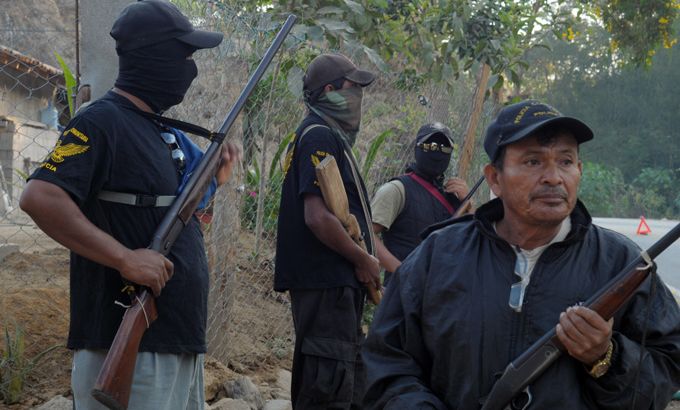
Is Mexico’s war on drugs close to a real end?
As Pena Nieto unveils new preventive strategy to deal with the issue, we ask if it will translate into positive change.
The election of Enrique Pena Nieto last year marked the return to power of the Institutional Revolutionary Party (PRI) that had ruled the country for 71 years prior to the year 2000.
Pena Nieto promised the PRI was no longer a party of patronage and corruption, but a modern force focused on economic growth, poverty reduction and tackling the drug-related violence unleashed during the presidency of Felipe Calderon.
This week the president unveiled his plan to tackle crime and take on the cartels.
|
“… the bottom line is I think we have seen very little real change on the ground … Mexico continues to be a state which systematically violates human rights, which has a catastrophic record over the last six years of over a 100,000 dead. It’s truly equivalent in many ways to what we hear about Syria but much more silenced, unfortunately, in the global media as well” – Camilo Perez-Bustillo, a professor of Human Rights at the National Autonomous University of Mexico City |
He appeared to reject Calderon’s policy of force, instead promising to approach the problem through a $9.2bn investment in social programmes to address the root causes of crime.
The government says the programme will help keep young people from joining gangs. It is not clear though how much of that money is funding that is already been announced as part of other programmes.
The initiatives include road building, improved health and social services, help for single mothers to find jobs, better park grounds and lighting and increasing school hours.
The money is targeted at 251 towns and neighbourhoods considered the most violent in Mexico.
President Pena Nieto says the new strategy focuses on prevention – instead of deploying troops and sophisticated weapons to tackle drug violence.
Nonetheless, thousands of troops remain on the streets as the “war on drugs” continues.
Inside Story Americas, with presenter Shihab Rattansi, discusses with guests: Camilo Perez-Bustillo, a professor of Human Rights at the National Autonomous University of Mexico City; and Steven Dudley, a fellow of the Mexico Institute at the Woodrow Wilson Center.
And in Ecuador, all indications suggest that President Rafael Correa’s leadership is almost certain to continue after Sunday’s presidential election.
Correa is already the longest-serving president the country has had in a century, despite having only come to power in 2007.
The closest among the seven candidates challenging him is the former banker Guillermo Lasso, from the Creating Opportunities party, a right-wing movement.
And Lucio Gutierrez, the former president is in the third place. But President Correa is also being challenged from the left as some have accused him of pursuing policies of a neoliberal bent.
Candidates like, Alberto Acosta, who once served as Correa’s energy minister, now believes the president has abandoned his core principles in favour of oil exploration and big business.
Correa has encouraged exploration plans in the biodiversity-rich Amazon despite opposition from indigenous groups who live there. The government auctioned off the rights to 13 oil blocks in the Amazon last November.
And it has allowed Chinese and Canadian firms to begin gold mining in forests sacred to indigenous groups. Some activists have been prosecuted for their opposition.
Indigenous activists accuse the government of not consulting them over water rights. They say large-scale mining will deplete and pollute water supplies.
Inside Story Americas, discusses Ecuador’s elections with Deborah James, director of international programs at the Center for Economic and Policy Research.
|
“He [Correa] has used a very interesting mix. They have a development plan that is based on their constitution that was popularly approved and it really included a mix of both fiscal stimulus and regulatory reform. On the fiscal stimulus side, they did five percent of GDP investment in the economy – a lot of this was in the construction sector, about $600m in construction, also in other infrastructure and healthcare and education spending. So the kind of things that really Deborah James, director of International Programs at the Center for Economic and Policy Research |